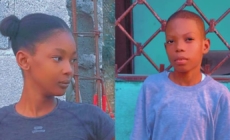-
Diamondbacks RHP Corbin Burnes will undergo Tommy John surgery - 2 mins ago
-
How to Watch Andorra vs England: Live Stream FIFA World Cup Qualifiers, TV Channel - 7 mins ago
-
DMV scam texts target drivers in 14 states with fake penalty threats - 17 mins ago
-
2025 Vikings game-by-game predictions: Will J.J. McCarthy prove to be right QB move? - 45 mins ago
-
Woman Buys 1963 Wedding Dress for $5 at Estate Sale—but There’s a Twist - 46 mins ago
-
Israel says it has retrieved the body of a Thai hostage kidnapped into Gaza on Oct. 7, 2023 - 47 mins ago
-
Rescue Dog Who Loves Playing With Water Wins Pet of the Week - about 1 hour ago
-
2025 Giants game-by-game predictions: All gasps, no breaks … and lots of pain - about 1 hour ago
-
Baldwin Park mourns slain police officer at candlelight vigil - 2 hours ago
-
Trump’s ban stalls lifesaving treatment for Haitian children who need to travel for surgery - 2 hours ago
One starry, starry night – The Budapest Times
How little I know about space and space agencies is embarrassing. Mind you, this lack of knowledge hasn’t kept me awake at night and until recently, I’d kept my ignorance well hidden. Even from myself. I had no clue how much I didn’t know until Łukasz Wyrzykowski gently corrected me. [For those of you who like to know how to pronounce the seemingly unpronounceable, say: Woo-cash Vi-zhi-kov-ski.]
NASA isn’t the North American Space Agency as I had thought but the National Aeronautics and Space Administration. I had been trying to make the point that while I knew something about NASA, I had never even heard of ESA – the European Space Agency. Seems I knew little about anything.
I know Gaia as the personification of Earth – Mother Earth; but in Wyrzykowski’s world, Gaia is the name of ESA’s star surveying spacecraft that was up there, somewhere, for more than 10 years:
From 27 July 2014 to 15 January 2025, Gaia has made more than three trillion observations of two billion stars and other objects throughout our Milky Way galaxy and beyond, mapping their motions, luminosity, temperature and composition.
While the Hubble Space Telescope takes cool photos, the Gaia spacecraft was all about video. Hours and hours and hours of it. Tons of data that is still being sifted through and examined for anomalies, like the odd family of stars desperate to leave home or a mysterious planet and a brown dwarf or an infant exoplanet that’s only 20 million years old. It’s a completely new world for me.
Wyrzykowski was speaking to a small group on retreat in the Tatras. He opened his presentation with an image of Vincent van Gogh’s painting The Starry Night. Completed in June 1889 it shows van Gogh not just as an artist but also as an observer of the sky. It’s now possible to go back to 1889 and see the same sky van Gogh saw through his bedroom window in the asylum in Saint-Rémy-de-Provence. What he painted wasn’t an image of the sky on one night, though, but rather a collage of images of the same sky over time.
Being far from the madding crowd, with nowhere to go but up or down, there was plenty of time to chat with the other speakers. My session on grateful living had gone down well and I was eager to learn more of what the others had to say. In particular, I was curious to know how (and why) anyone would become an astronomer.
As a young lad in what he refers to as ‘an obscure town in Poland’ Wyrzykowski was curious about what was going on up there in the sky. Encouraged by his father to follow his dream, he attended the University of Warsaw where he completed a Master’s in Astronomy and a PhD in Astrophysics. Stints at the universities of Tel Aviv, Manchester, and Cambridge rounded off his education and he is now a Full Professor at the Astronomical Observatory at the University of Warsaw and is also on staff at the Astrophysics Division of Poland’s National Centre for Nuclear Research (NCBJ), also in Warsaw.
Each year, some 30 students enrol in the undergraduate programme. Five years later, four might walk away with a Master’s. It’s intense, but with a 4:1 pupil-teacher ratio, it amounts to individual tutoring. Whether those four end up in astronomy is partly down to them and partly to circumstance – being in the right place at the right time to avail of the right opportunity. Whatever happens, they’re well-qualified for jobs in areas like statistics, programming, and physics.
The lucky ones, ones like Wyrzykowski, get to do what they love, to live their passion.
This pleased me.
My friend’s son is really into history – his is a tangible interest, evident by the way he speaks about what’s going on in the world today and how what is happening has been shaped by what went on 80 or 100 years ago. He lights up when he talks about obscure wars, pivotal elections, and historical events that shaped our world. But he’s going to study engineering, he said, taking a pragmatic approach to employability. No, I screamed in my head. Don’t do it. Study what you love and everything else will come right.
Wyrzykowski’s mission is similar.
So many young people in obscure towns and villages around the world don’t know there is a path out there that will take them to the stars – literally. So many companies don’t realise the untapped potential that space offers. Yes, an economic return on investment exists – the geo return.
Space serves many economic and societal uses beyond spaceflight itself, including weather forecasting, food, agriculture, disaster mitigation and management, climate change, energy, transport, insurance, and security…the applications of space are seemingly endless.
The cynical part of me wondered why the world is spending millions on space when we seem hellbent on destroying the planet we’re living on. The curious side of me won out. There is so much we don’t know.
Earlier this year, Wyrzykowski founded the European Astronomical Society of Small Telescopes (EASST) – a non-profit organisation dedicated to bringing astronomy closer to people. He wants to focus our attention on the sky and inspire us to ‘explore the universe and actively participate in global research’. Each one of us. You. Me. Small companies. Big companies. Start-ups. Schools. Universities. Anyone and everyone.
As Wyrzykowski says, imagination is the only limit.
How many of us look up at night? With so much light pollution, can we even see what’s out there? Are we losing (or have we already lost) our ability to be in awe of something? Anything?
High up in the Tatras, Wyrzykowski watched the night sky, hoping for a clear view. When it was dark enough, he brought us outside and with a laser, gave us a tour of the stars.
He talked about the Milky Way, stars, planets, satellites, and black holes. He spoke in terms of light years.
He answered our questions. He gave us the science, but more importantly, he reignited my ability to wonder.
Later, Wyrzykowski mentioned the AX-4 mission to the International Space Station, which, at the time of writing, is set to launch on 10 June. The crew of four led by commander Peggy Whitson from Axiom and piloted by Shubhanshu Shukla of the Indian Space Research Organisation, includes two mission specialists: Sławosz Uznański-Wiśniewski, a European Space Agency project astronaut from Poland, and Tibor Kapu representing the Hungarian Space Office. [Kapu was one of four Hungarians selected from 247 applicants for the Hungarian to Orbit (HUNOR) Astronaut Program. And now, his day has come.]
A week ago, this news wouldn’t have been news. Not for me. I might have scanned a headline and moved on. I had no real sense of what astronomers do or even why space is something to get excited about.
Now, I’m ready to get a bar of Stühmer Moment space chocolate, check out the programme at the Svábhegyi Csillagvizsgáló [am gutted to hear that the Budapest Planetarium is closed permanently], follow the AX-4 crew on their 14-day mission, and be ready to book my train to Warsaw when Wyrzykowski’s van Gogh exhibition opens.
Instead of dusting around the telescope upstairs, I’ll be looking through it, looking to the starry, starry sky for inspiration and to recapture the feeling of awe birthed in the Tatras, fuelled by the passion of a professional who is dedicated to his craft and determined to convert the world to his cause.
Mary Murphy is a freelance writer, speaker, copyeditor, blogger, and communications trainer. Read more at www.unpackingmybottomdrawer.com | www.anyexcusetotravel.com | www.dyingtogetin.com
Source link





























